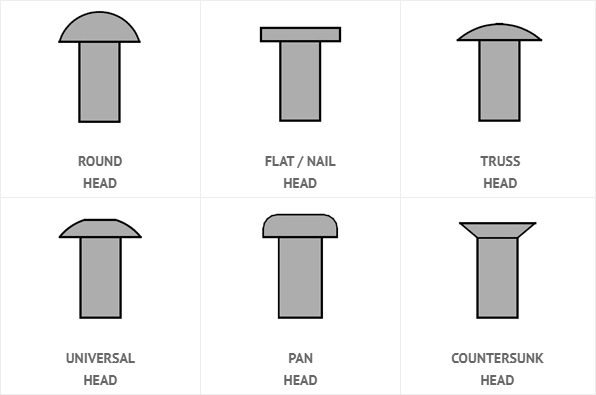Exploring the World of Rivet Heads: Types, Applications, and Materials
In the intricate dance of construction and manufacturing, rivets play a pivotal role, albeit often backstage. These small yet mighty fasteners hold together everything from the clothes we wear to the bridges we cross. The type of rivet head chosen for a project can significantly influence both the aesthetic and functional outcome. This article will navigate through the diverse world of rivet heads, shedding light on their types, applications, and the materials they are made from.
Understanding Rivets and Their Importance
Rivets are a type of permanent mechanical fastener. After installation, they feature a head on one side, with a tail that expands in a way that makes it nearly impossible to remove without cutting or drilling. The choice of rivet head style depends on various factors, including the required strength of the joint, the materials being fastened, and whether the appearance of the rivet is a consideration in the project.
Rivet Head Types

Round Head Rivets
Round head rivets are characterized by their large, semi-circular heads. They are commonly used in construction and shipbuilding for their strength and reliability, providing a large bearing surface when working with soft materials.
Flat (Nail) Head RivetsFlat head rivets, also known as nail head rivets, have a flat top that sits flush with the material surface. They are often used where a smooth finish is required for aesthetic reasons or to minimize interference in moving parts.
Truss Head RivetsTruss head rivets feature a low-profile, mushroom-shaped head with a large diameter. Ideal for use with thin or brittle materials, their design distributes the load over a wider area.
Universal Head RivetsUniversal head rivets serve as a versatile option, designed to replace various rivet styles. Their head shape is a compromise between flat and round heads, suitable for a wide range of applications.
Pan Head RivetsPan head rivets have a cylindrical head with a flat top surface and vertical sides. Common in mechanical applications, they offer a neat finish while providing moderate to high load capacity.
Countersunk Head RivetsCountersunk head rivets are designed to sit flush with the material surface, crucial for applications requiring a smooth finish, like in aircraft manufacturing, to reduce aerodynamic drag.
Materials Used in Rivet Manufacturing
Aluminum RivetsLightweight and corrosion-resistant, aluminum rivets are perfect for applications where weight and resistance to the elements are factors. They are frequently used in the aerospace and automotive industries.
Steel RivetsOffering high strength, steel rivets are used in applications requiring durability and resistance to heat. They are commonly found in construction, heavy machinery, and where structural integrity is paramount.
Stainless Steel RivetsFor environments prone to corrosion, stainless steel rivets provide an excellent solution. Their resistance to rust makes them ideal for marine applications, food processing equipment, and outdoor structures.
Copper and Brass RivetsCopper and brass rivets are chosen for their electrical conductivity and corrosion resistance. They are often used in electrical applications, jewelry making, and in historical restorations where matching the original materials is essential.
Choosing the Right Rivet Head for Your Project
Selecting the appropriate rivet head involves considering the materials to be joined, the desired aesthetic outcome, and the environmental conditions the rivet will face. It's also essential to consider the tools available for installation, as some rivet types require specialized equipment.
Conclusion
Rivets might be small, but their impact on construction and manufacturing is immense. By understanding the different types of rivet heads and the materials they are made from, professionals and hobbyists alike can make informed decisions that enhance the durability, functionality, and appearance of their projects. Whether it's building a skyscraper or repairing a leather bag, choosing the right rivet head is a crucial step in ensuring the success of your endeavor.
As we've explored the various rivet head styles, from the common flat and dome heads to the specialized countersunk and structural types, it's clear that there's a rivet for every application. The key lies in matching the rivet's characteristics to the needs of the project, ensuring not only a strong joint but also a pleasing aesthetic and long-lasting performance.
Submit an RFQ now!
